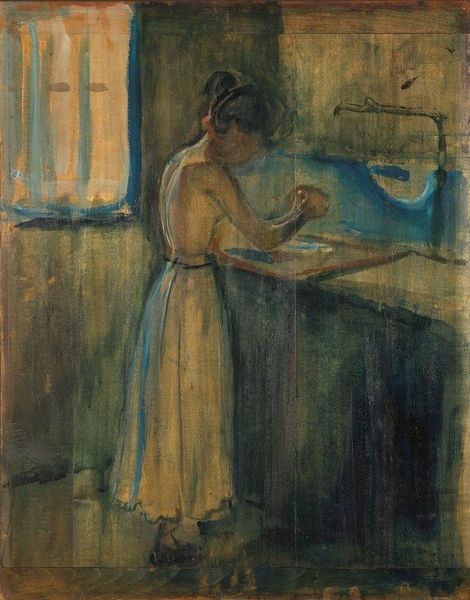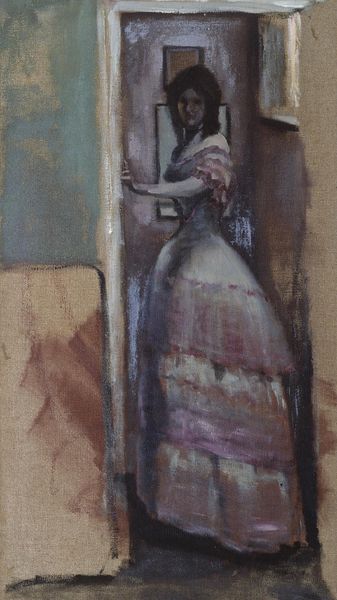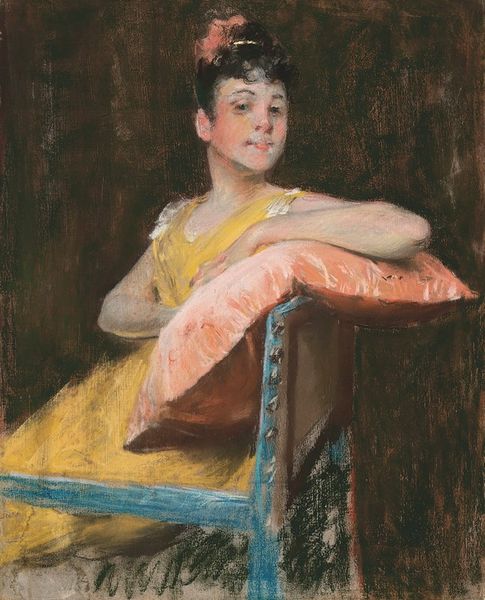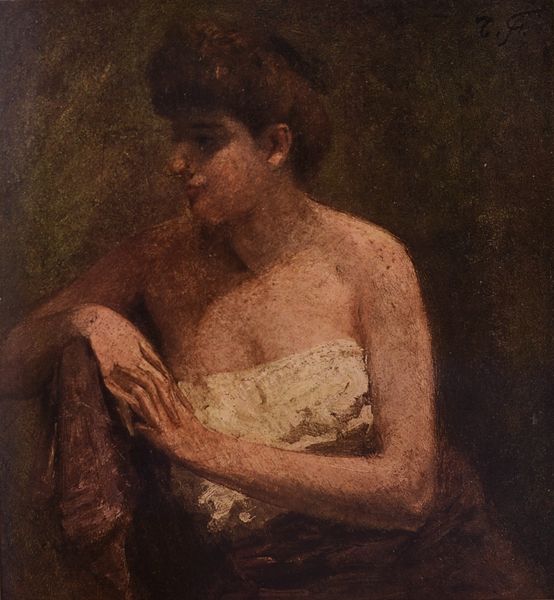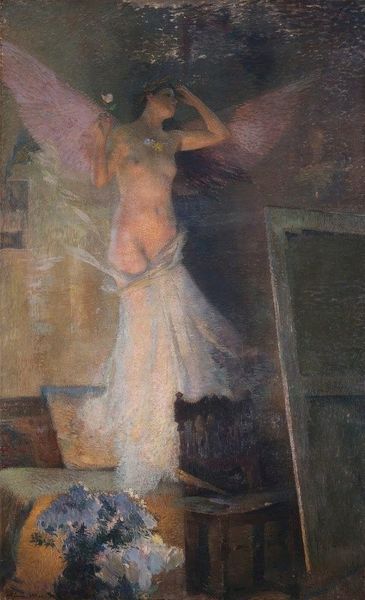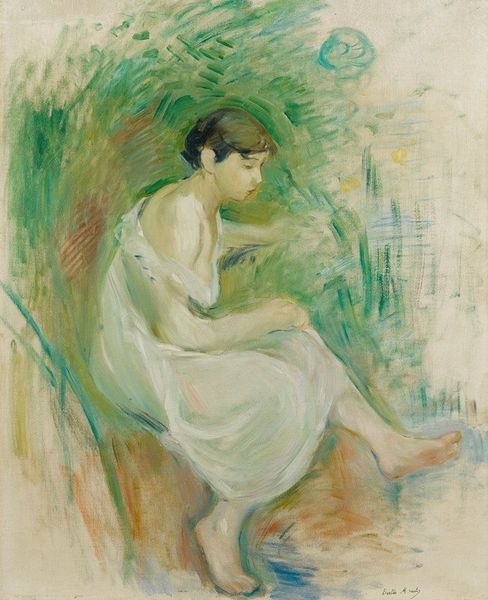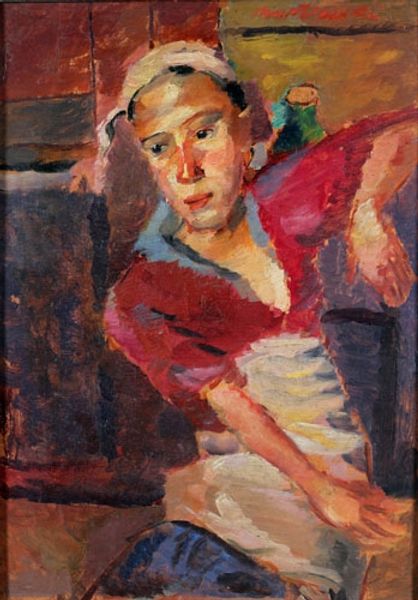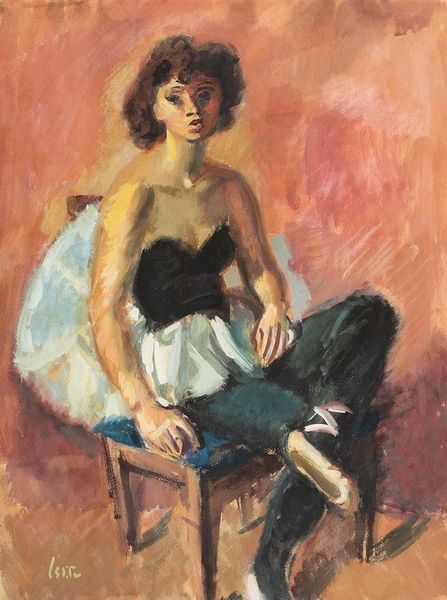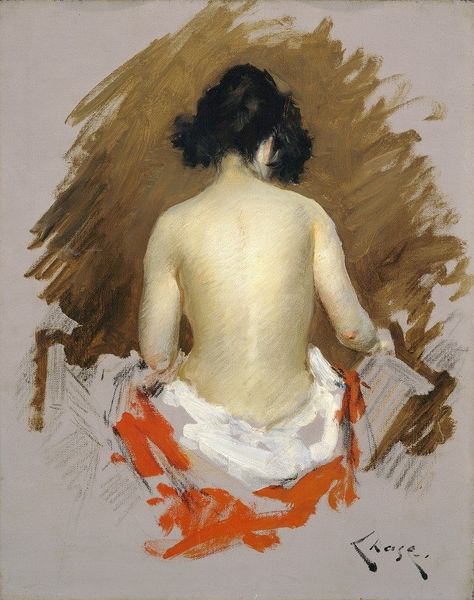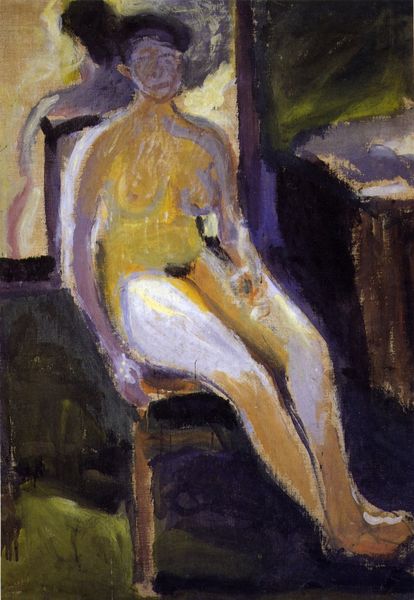
oil-paint
#
portrait
#
figurative
#
impressionism
#
oil-paint
#
oil painting
#
intimism
#
underpainting
#
genre-painting
#
portrait art
Copyright: Public Domain: Artvee
Curator: Gazing at Ramón Casas's oil painting "Dona Rera Persiana", one immediately feels a sense of intimate stillness, don’t you think? The composition seems to trap her within a private world, the Venetian blinds both a barrier and an intriguing source of light. Editor: Yes, it exudes an intimate quality. And I would say, while the work is named "Dona Rera Persiana," without further dating information or details on where it hung initially, its role feels rather universal— it depicts a kind of bourgeois domesticity typical of its era, particularly the lives of women of that class. I find that understanding social roles is key. Curator: Precisely. It's tempting to dive deeper into how class is framed. Note how her clothing is casual yet chic; what do these specific choices of garb suggest about her agency? Also, observe the expressive brushstrokes—those impressionistic details are crucial because they reflect this period's fascination with interior life. How are those inner workings perceived, captured and judged when this hangs in a bourgeois gallery? Editor: Right, because if this hangs in an explicitly bourgeois space, what does that say about Casas as a contemporary painter working within the confines of social and artistic norms? This "intimate stillness" you mentioned—is it really an act of rebellious intimacy or, simply, art reflecting its market? Curator: I see your point entirely. Yet, doesn’t this focus on interiority, albeit one framed by commercial expectations, still give her some power? Her downward gaze feels less passive and more introspective, as if pondering a secret. Maybe the gaze is both a compliance and a negotiation, challenging her assigned place from the inside out? Editor: A compelling interpretation! However, from a historian's viewpoint, it might be more pertinent to question the societal function served by representations of feminine seclusion at this historical moment. Is the work inadvertently complicit, offering up her supposed 'secret' to be consumed, and thus neutralized by a viewing public that feels privy to these sorts of interior moments? How much is ‘pondering’ and how much is simple expectation and performance? Curator: True, framing it in light of power dynamics shows us the contradictions within its gentle appearance. Maybe those are always at odds. Editor: Precisely. Art’s historical narrative lies as much in what it shows as in what it does not.
Comments
No comments
Be the first to comment and join the conversation on the ultimate creative platform.
